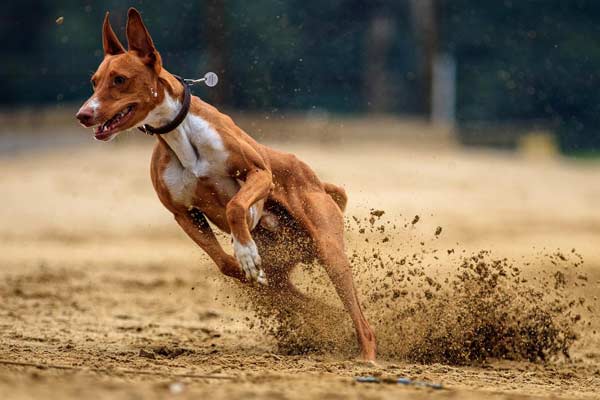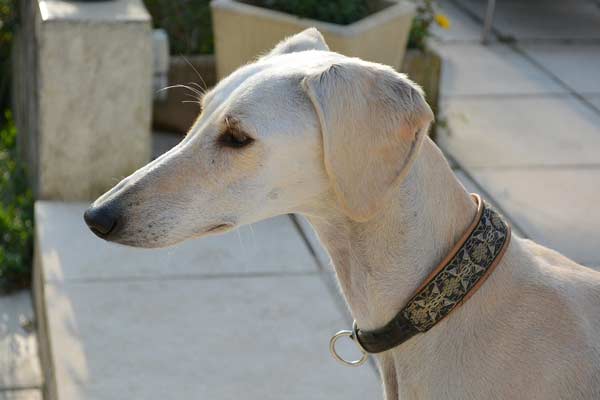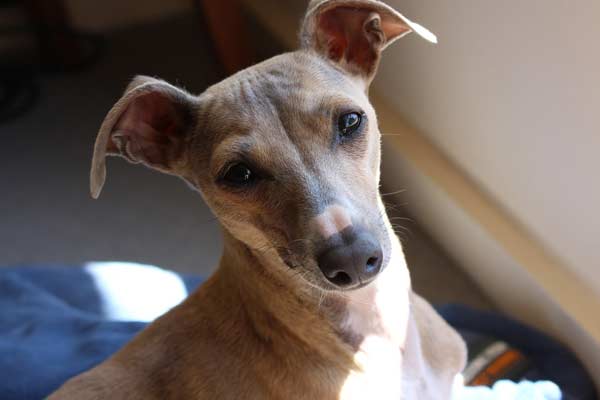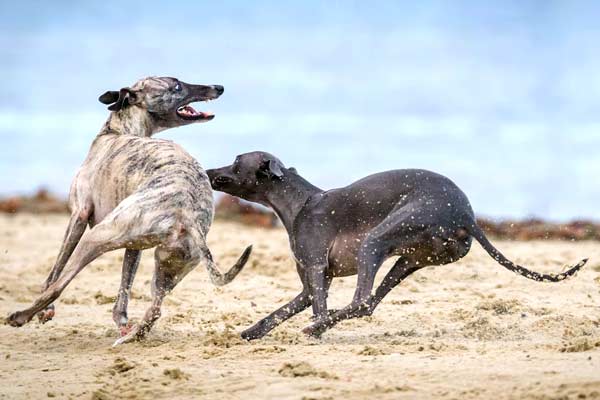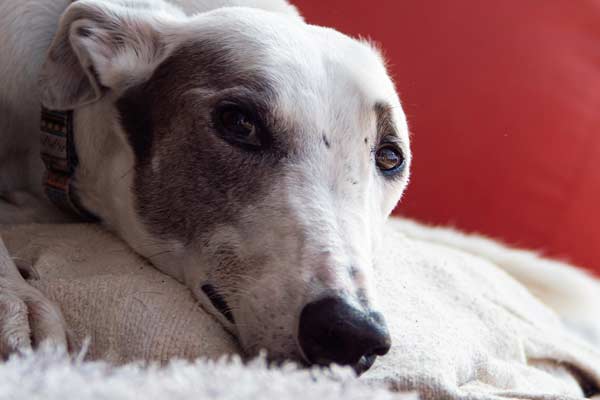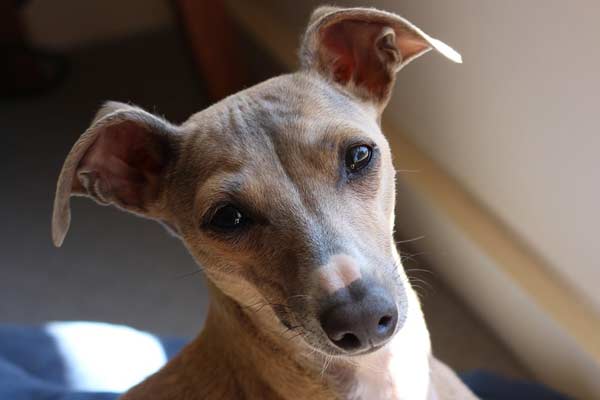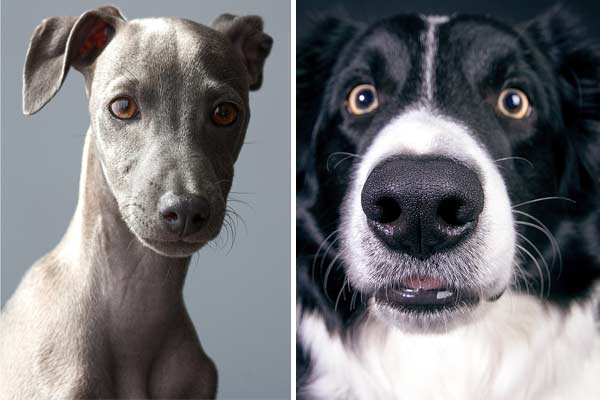Are Greyhounds Aggressive Dogs? The Resolve to Bite
Few dogs are as docile or submissive as a Greyhound. Many retired Greyhounds get a second chance at loving homes through national adoption programs.
Greyhounds are the most commonly adopted purebred dog. But is there a dark side to this otherwise phenomenal pet? Are Greyhounds aggressive dogs?
Greyhounds are not aggressive regarding people. Most Greyhounds that bite humans attack out of fear-based aggression. Any dog, however, can become menacing under the right circumstances, and Greyhounds are no exception.
Although many owners discount a Greyhound’s predatory drive, the instinct leads to the potential pursuit of and attacks on cats and other small animals. Finally, Greyhounds can display hostility against unfamiliar dogs.
Why are Greyhounds not aggressive dogs?
For the most part, dog lovers are correct in assuming that Greyhounds are not an aggressive breed.
Greyhounds are not a guarding breed
Greyhounds do not have any history of effective guarding. While Great Danes hunted and guarded their owners’ estates, Greyhounds coursed game and provided companionship.
When they began to fill the specialized racing niche, their energy would have been wasted on anything other than running. They have no guarding instincts and do not show protective aggression.
Greyhounds are not fighters
Greyhounds were not fighting dogs and were not in ancient times either. You can conclude that a Greyhound was not meant for fighting based on its long and spindly limbs, lean physique, and exceedingly thin skin.
Their features make Greyhounds vulnerable to severe injuries if they stand off against another dog, especially with the wide jaws and relatively low center of gravity of fighting canines.
Moreover, dog aggression is discouraged in Greyhounds that race. Dogs that attempt to fight other competitors on the track usually never race again.
Finally, Greyhounds were much like other hunting dogs such as Beagles and Foxhounds in that they hunted in groups. Dog aggression was almost entirely selected out of the breed before formal racing began.
Greyhounds have a pliable temperament
It is not clear when greyhounds became a docile breed, but English nobles cultivated a gentle dog through selective breeding.
Modern Greyhounds continue to be laid-back, passive, sweet-natured, and pliable.
They usually go out of their way to avoid a confrontation and are extremely sensitive to harsh handling or strong verbal reprimands. Many of them hardly ever bark, let alone growl or snarl.
The Public’s Perception of Greyhound Aggression
The public frequently thinks of Greyhounds as aggressive dogs. Sometimes people do not necessarily think of Greyhounds as dangerous to humans but as significant threats to small pets.
Racing Animals and Competitive Aggression
Sometimes, people connect the Greyhound’s competitive racing career to harsh handling and innate aggression.
In truth, Greyhounds are more of a pawn in racing. Bettors benefit from the Greyhound’s natural speed and desire to run and chase. Owners get better results if they treat their dogs with respect.
While Greyhounds no doubt experience a thrill from the chase, they are not competitive like people. A greyhound does not care if it finishes ahead of other dogs in a race.
Coursing dogs were probably more competitive as the winner won the prize of being able to catch a live hare.
It does not help the public perception that Greyhounds wear muzzles when they race.
Anyone could conclude that Greyhounds become aggressive from the adrenaline of running at full speed and will attack anything around them.
On the contrary, Greyhounds wear muzzles because they run with open mouths and owners fear accidental contact between dogs racing so close. The dogs’ thin, delicate skin has been previously mentioned.
Racing dogs also wear muzzles to help clarify close finishes and prevent them from destroying the lure after the race.
Greyhounds are large dogs
A Greyhound is a tall and muscular dog that can be intimidating to people unfamiliar with it. It is 27 to 30 inches tall and weighs 55 to 90 pounds.
A Greyhound’s teeth look particularly large with its narrow and streamlined snout and head.
Laws require Greyhounds to wear muzzles on walks
Some locales require that owners muzzle their Greyhounds when they walk them in public. This can be misleading as some ordinances require all dogs to be muzzled when you walk them.
However, laws that require a Greyhound to be muzzled act on the presumption that they will chase and kill small animals.
These laws ignore that Greyhounds are individuals who do not continuously pursue other animals.
Moreover, such regulations single out a breed that has the same tendencies as other hunting dogs, albeit it is much faster than most.
When are Greyhounds aggressive dogs?
It takes extreme circumstances for Greyhounds to become aggressive towards people.
Many are aggressive to small animals because of their hunting history and powerful prey drive.
Inappropriate or Incomplete Socialization
If you purchase a Greyhound puppy, socialization is as important as any other dog. A Greyhound’s docile and sensitive nature makes it vulnerable to stress and timidity.
Greyhounds adopted from the track are often only socialized to specific situations.
They are grouped and partnered with other Greyhounds and travel between race tracks. Their experience with people is limited to their handlers and loud and rowdy spectators.
A Greyhound’s lack of familiarity with a domestic home and family setting is often underestimated.
Although most Greyhounds seem to adapt to different settings quite readily, some probably suffer from chronic stress and anxiety.
Often, a Greyhound’s anxiety goes unrecognized because it tends to be so docile. Rather than initially show aggressive behavior, an anxious Greyhound may adopt freezing in place or fleeing as a coping mechanism.
Predatory Aggression
Fearing that your Greyhound will chase and attack small animals, including some pets, is warranted in many cases. It is especially true for a Greyhound that you adopt from the racetrack.
Some Greyhounds only pursue animals like squirrels, rabbits, and chipmunks. Others will also chase cats and even small dogs.
Rarely a Greyhound may think a toddler is acting like a prey animal. Unfortunately for small pets, a Greyhound in pursuit has the end goal of making a kill.
Requiring you to muzzle your Greyhound on a leash walk through the neighborhood might seem harsh.
However, applying a basket muzzle when your Greyhound runs loose in the dog park is wise when small dogs are about. Of course, it always depends on your dog’s personality.
The Greyhound in the video is not dog-aggressive but has a solid drive to chase.
Most Greyhounds bite only from fear
It would help if you exercised caution when you adopt a Greyhound from the track. A meek and mild manner tends to cover up fear, anxiety, and emotional distress.
You can take several precautions to ensure you do not trigger fear aggression in your Greyhound.
- Adopt an appropriate dog for your family situation and lifestyle – reputable adoption agencies perform personality assessments of their Greyhounds.
- Avoid adopting a Greyhound if you have children under the age of eight years old – rambunctious children can make Greyhounds uncomfortable, especially when the dog has no prior exposure to kids; young children often have poor canine etiquette.
- Allow a period of familiarization for your Greyhound – read the signs of stress in your dog and progress as slowly as necessary; respect your dog’s personal space.
- Your prospective Greyhound should be assessed for compatibility with cats and other dogs.
- Never use force or harsh training methods.
- Do not leave your Greyhound alone for extended periods, allowing it to develop separation anxiety and other emotional issues.
- Avoid allowing your Greyhound to escape and run loose in the neighborhood – do not encourage your dog to chase other animals.
A few regions have reported an increase in the incidence of Greyhounds biting people, especially children.
The overwhelming majority of Greyhound biting and snapping is secondary to fear-based aggression.
Children and misguided people show their affection for dogs with inappropriate contact.
- Crowding the dog
- Persistently invades the pet’s space even when it shows avoidance behavior, signs of distress, or warns that it is uncomfortable.
- Looming over the dog
- Laying atop your Greyhound
- Rubbing faces with or kissing the dog
For a dog unfamiliar with this type of interaction, chronic stress can turn into worry and fear aggression.
A mild-mannered dog may attack when it feels constantly harried, threatened, or cornered.
Uncharacteristic Aggression
Greyhounds can occasionally have aggression that is out of character for the breed.
It simply shows that Greyhounds, like all dogs, are individuals that do not always fit a mold. It also proves that you cannot know what every dog goes through on the track. Some undergo abuse, neglect, or other trauma.
A list of a few surprising types of aggression that Greyhound adopters have experienced are as follows:
- Dominance – rare in any breed and exceptionally limited in Greyhounds
- Guarding – unknown where this trait comes from, but the rare Greyhound will patrol your yard.
- Dog – not uncommon for a Greyhound to exercise aggression against certain dog breeds that are not other Greyhounds
- Resource – some Greyhounds become overly possessive and territorial; some incidents may be mistaken for dominance aggression.
